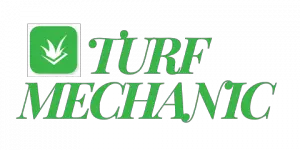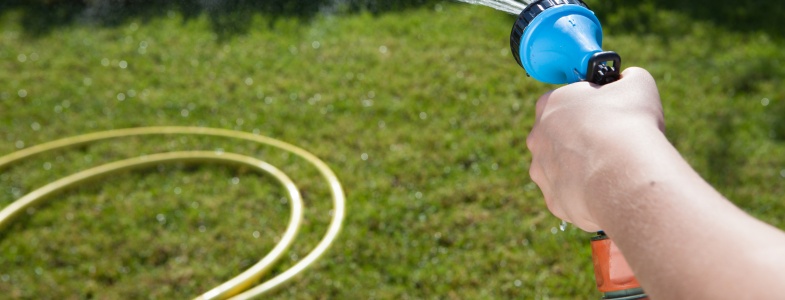Wondering why your hose isn’t performing well? Perhaps you’ve already heard that it’s because of the diameter, but you’re not sure. No worries, in this post, I’ll be clearing you on everything you need to know about gardening hose and water pressure, how you can improve your water pressure or fix a broken one.
Increasing the water pressure from a garden hose saves me time and energy when watering my lawn, garden areas, and even when washing my car, and this is because the additional pressure forces more water from the hose and sprays it evenly over a wide area; this allows me to be fast and efficient…always.
So, what happens with a when your hose has a low pressure? Several things happen behind our sight when we use a low-pressure hose, like poor absorption in compact soil, but the major one is chores. The low-pressure hose makes even our interesting chores a pain, and so we spend less time with what truly matters.
WHAT IS THE MAIN CAUSE OF HOSE PRESSURE?
When I ask this question people this question, a lot of persons always think that is the hose diameter, and so smaller diameter is the hack to improving your water pressure.
Yes, using a smaller diameter hose may increase the pressure, this statement seems logical. It makes sense that forcing water through a smaller diameter would increase the pressure, but it is not valid; the water could reach the end of the pipe with zero pressure (this depending on the hose length).
Pressure drop in a hose depends not only on the diameter but the length of the hose and water flow rate.
I could explain this even more, but this article is not about boring you with some fluid mechanics; we’re here to talk about your lawn. However, I’m going to show you how to check your hose for faults that will cause low pressure.
HOW TO TROUBLESHOOT YOUR GARDEN HOSE/PIPE
As I’ve mentioned earlier, a lot of things could be contributing to your hose’s low pressure, but we’ll first look at some faults around the hose, and how you can correct the issues.
- YOU SHOULD LOOK FOR LEAKS IN YOUR HOSE:
This is the most common cause of pressure drop in hoses. When your hose starts leaking, a good amount of the water pressure will be lost before the hose reaches the diffuser.
To check for leakages, you can start by stretching the hose, flat on the ground, then turn the water on, and inspect the whole whose to see if there’s water escaping from any point. The leaks can be tiny and less visible, so make water flows at a reasonable pressure to so you’ll notice if it’s leaking from any point.
If you detect a leak, you can use a rubber patching kit from any plumbing store to patch up the holes.
- MAKE SURE THAT THE HOSE IS FULLY CONNECTED TO THE SPIGOT AND NOZZLE:
Didn’t notice any leakages?The next step is to check your hose connector to make sure it’s screwed tight all the way. Loosed connections can cause leakage, thus leading to a drop in water pressure.
Check all through other connections and fittings to make sure they’re tight. Try cleaning any dirt that might be blocking water flow through the pipe by unscrewing the hose from the spigot and nozzle and reattaching them after cleaning them. Also, while you’re checking the faucets or nozzles, it’s the best time to check for dirt. You can unscrew both to make sure it’s clean and screwing it back to normal.
- MAKE SURE THE HOSE IS STRETCHED OUT ALL THE WAY
A twisted hose is another major cause of a drop in pressure. Walk along the length of the hose and straighten any kinked or twisted up spots, smoothen and straighten the hose out to see if it will increase the water pressure.
- CHECK THE ROUGHNESS OF THE INTERNAL SURFACE OF THE HOSE
Again, I won’t bore you with some Fluid mechanics, but it’s essentialyou know that hoses with smother internal surfaces outperform those with rough surfaces, so if your water pressure issue started from the first day you bought your hose, that might be the issue. Also, let’s look at some ways you can still improve the pressure.
HOW TO INCREASE WATER PRESSURE IN YOUR HOSE
Get a quality water pump. Now that might sound direct, but a lot of persons make the mistake of buying a cheap water pump, even with poor reviews and expect it to fix their water pressure issues. No. For low pressure, you’ll need a water pump to boost the pressure.
Sometimes, the reason for your low pressure could be the elevation of your reservoir tank. In this case, you might want to the pressure range of the watering coming from the board; it should be around 50 to 65 Psi, which is ideal reading.If it’s lesser than that, you’ll need to get a water pump.
LET’S DISCUSS THE STEPS TO INCREASE WATER PRESSURE IN GARDEN HOSE/PIPE
1.MEASURE THE WATER PRESSURE IN YOUR HOME:
To measure your water pressure, turn off all faucets and any other appliances that use water in your home; then, you screw a pressure gauge onto the nozzle anti-clockwise. Take the measurement on the gauge. If you can’t find a nozzle, attach the pressure gauge to the nearest faucet. Typical home water is to be maintained between 40 to 65. If your reading is below the ideal range end, it could be the cause of the pressure drop.
2.INCREASE YOUR HOME WATER PRESSURE WHEN IT READS LOW
If your water pressure reads below 45 Psi on your Pressure Reading Valve (PRV), you increase the pressure by turning the bolt clockwise. Depending on your type of PRV, you’ll need a screwdriver or an adjustable spanner.
- YOU CAN INSTALL AHIGH-POWERED NOZZLE:
If your water pressure is normal, you can still high-powered nozzles to boost the pressure and get stuff done faster.The standard high-powered nozzle is the fire-hose style with a long, thin tube. This concentrates the water and increases the pressure.
4.THE USE OF A WATER PUMP
The impact of the water pump can’t be overemphasized. In case you don’t know already, they’re more like your most accessible way to boost water pressures. Water pumps are like power-washers. You just have to screw the end of your garden hose to the pump and connect the pump to any reliable water source.
SUITABLE DIAMETER DIMENSIONS FOR GARDEN HOSES
While diameter might no be the only factor that affects hose pressure, be careful of that when choosing a hose. 5/8inch diameter is the most common diameter for adequate and efficient water flow pressure, but garden hoses still come in 1/2inch and ¾ inch diameter.
CONCLUSION:
Now you’ve made it down here; I’ll recap some main points of this post to make sure you understand. First, yes, hose diameter affects water pressure; however, it’s likely not the main reason why your water pressure is low. Even most professionals use a 3/4inch hose to the 5/8inch or I/2inch alternative.
There is a lot of stuff that could be affecting your water pressure, and you can use our troubleshooting technique to know what your problem might be and fix it already. If it’s an external factor that’s causing this, then you could use some help after this lockdown.
Stay safe.

